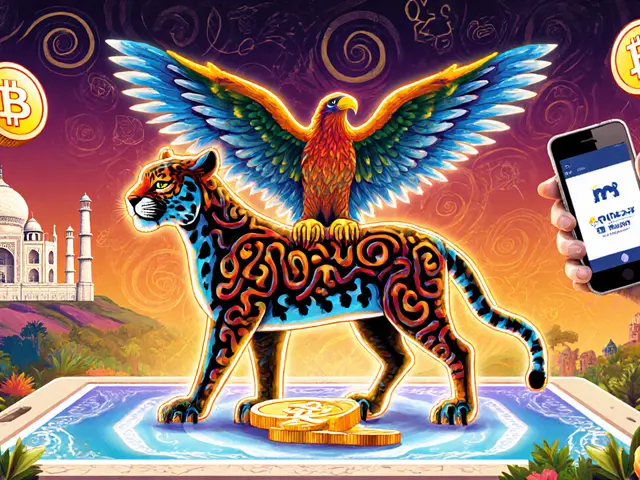When people talk about blockchain, they often mean any kind of digital ledger that doesn’t need a central bank or authority. But that’s not quite right. Blockchain is just one type of distributed ledger technology - not the whole thing. If you’ve heard that blockchain and DLT are the same, you’re not alone. Most headlines treat them like twins. But they’re more like a sedan and a car: one is a specific model, the other is the whole category.
What Is Distributed Ledger Technology (DLT)?
Distributed Ledger Technology, or DLT, is simply a way to store data across many computers at once. Think of it like a shared spreadsheet that updates in real time for everyone who has access. No single person or company controls it. Instead, every participant holds a copy, and changes must be agreed on by the group. This eliminates the need for middlemen like banks, clearinghouses, or notaries.
DLT doesn’t require data to be arranged in blocks or chains. It can organize records in any structure - as long as everyone agrees on the rules. For example, IOTA’s Tangle uses a directed acyclic graph (DAG), where each new transaction confirms two older ones. R3’s Corda doesn’t use blocks at all - it lets parties share only the transactions they care about, keeping sensitive data private. These are still DLTs, just not blockchains.
DLT systems rely on consensus mechanisms to decide what’s valid. Some use Proof-of-Stake, others use Practical Byzantine Fault Tolerance (PBFT), or even custom rules designed for specific industries. Enterprise DLTs like Hyperledger Fabric often assume participants are known and trusted - think banks, shipping companies, or government agencies working together. That’s why they can be faster and use far less energy than public blockchains.
What Is Blockchain?
Blockchain is a specific kind of DLT where data is grouped into blocks and chained together using cryptographic hashes. Each block contains a list of transactions, a timestamp, and the hash of the previous block. Change one block? You break the chain. That’s what makes it immutable.
Blockchain was invented in 2008 by Satoshi Nakamoto as the foundation for Bitcoin. It was designed for trustless environments - where users don’t know or trust each other. That’s why it uses energy-heavy consensus methods like Proof-of-Work (PoW). Bitcoin miners compete to solve complex math puzzles to add new blocks. This takes time and power, but it creates security through cost.
Public blockchains like Bitcoin and Ethereum are open to anyone. You don’t need permission to join. Transactions are visible to all. That openness is great for cryptocurrencies, but it’s a problem for companies that need privacy. Ethereum’s move to Proof-of-Stake in 2022 (called The Merge) cut its energy use by 99.95%, but it still operates on a public, chain-based structure.
Key Differences Between DLT and Blockchain
The confusion between DLT and blockchain comes from overlapping features. But here’s where they truly diverge:
- Data structure: Blockchain forces data into sequential blocks. DLT doesn’t. IOTA’s Tangle, for example, has no blocks - just transactions linking to each other.
- Consensus: Blockchains often use PoW or PoS. Many enterprise DLTs use PBFT, which is faster and doesn’t require mining. PBFT can finalize transactions in seconds. Bitcoin takes 10 minutes per block.
- Permissioning: Public blockchains are open. Most DLTs used by banks or supply chains are permissioned - only approved participants can join.
- Privacy: On a public blockchain, all transactions are visible. DLTs like Corda or Hyperledger let you share data only with relevant parties.
- Token requirement: Bitcoin and Ethereum need native tokens (BTC, ETH) to pay for transactions. Enterprise DLTs like those used by Maersk or BBVA don’t need tokens at all.
- Scalability: Bitcoin handles about 7 transactions per second. Ethereum before Merge did 30. Hedera Hashgraph, a non-blockchain DLT, handles over 10,000 TPS. That’s why central banks building digital currencies (CBDCs) are choosing non-blockchain DLTs.
One way to remember it: All blockchains are DLTs. But not all DLTs are blockchains.

Who Uses What - And Why
Market data shows a clear split in usage:
- Public blockchains dominate cryptocurrency. Over 97% of crypto projects use blockchain architecture. Bitcoin, Ethereum, Solana - all are blockchains.
- Enterprise DLTs lead in finance and supply chain. Deloitte’s 2023 survey found 65% of banking pilots use non-blockchain DLTs like Hyperledger Fabric or R3 Corda. Why? Speed, privacy, and control.
- Central bank digital currencies (CBDCs) are almost all built on non-blockchain DLT. The European Central Bank reported that 85% of CBDC projects use architectures that aren’t chain-based because they need higher throughput and lower latency.
Real-world examples:
- Maersk’s TradeLens: A DLT platform using Hyperledger Fabric to track shipping containers. 98 companies participate. No blockchain. No tokens. Just secure, shared records.
- BBVA’s trade finance pilot: Used blockchain (Ethereum) to cut document processing time by 80%. But it took 18 months to build. A similar Corda-based DLT solution took 12 months.
- JPMorgan’s Quorum: Built on Ethereum but modified to be permissioned. Still faced delays - 15-second finality was too slow for high-frequency trading.
Developers notice the difference too. Reddit users in r/blockchain reported that 78% of those working on private networks prefer Hyperledger Fabric over public blockchains. Why? 4,500 TPS vs. 30 TPS. That’s not a small gap - it’s the difference between usable and unusable for real business.
Performance, Energy, and Cost
Energy use is one of the biggest complaints about blockchain. Bitcoin consumes about 1,544 kWh per transaction - more than the average U.S. household uses in two weeks. That’s why Ethereum switched to Proof-of-Stake. But even then, public blockchains still require global node networks to validate every transaction.
Enterprise DLTs like Hyperledger Fabric use PBFT. That cuts energy use by 99%. But there’s a trade-off: PBFT only works well with up to 200 nodes. That’s fine for a consortium of banks - not for a global public network.
Costs also vary. Building on Ethereum means paying gas fees - sometimes tens of dollars per transaction during peak times. Enterprise DLTs have no gas. Costs are internal - servers, staff, integration. For a company, that’s easier to budget.

Getting Started: Which One Should You Use?
If you’re building something for the public - like a cryptocurrency, NFT platform, or decentralized app - blockchain is still the go-to. Ethereum, Polygon, Solana - they have the tools, communities, and developer support.
If you’re in finance, logistics, healthcare, or government - and you need privacy, speed, and control - choose a permissioned DLT. Hyperledger Fabric, R3 Corda, or Hedera Hashgraph are better fits. You won’t need tokens. You won’t need mining. You’ll get faster results.
Here’s a quick decision guide:
- Use blockchain if: You need trust among strangers, you’re building a public-facing crypto project, or you want maximum decentralization.
- Use DLT (non-blockchain) if: You’re in a consortium, need high throughput, care about privacy, want low energy use, or are building for enterprise systems.
The Future: Blending Both
The lines are starting to blur. R3’s Corda 5, released in March 2023, now allows optional cryptographic chaining - meaning it can behave like a blockchain when needed. Ethereum’s success has pushed other DLTs to adopt smart contract features. Meanwhile, non-blockchain DLTs are adding more security layers to mimic blockchain’s immutability.
Gartner says DLT has reached the “Plateau of Productivity” - meaning it’s no longer hype. It’s being used. Blockchain, meanwhile, is still on the “Slope of Enlightenment,” refining its role. By 2027, the World Economic Forum predicts 10% of global GDP will be stored on DLT or blockchain platforms.
But the real winner isn’t one technology. It’s the ability to pick the right tool for the job. You wouldn’t use a chainsaw to trim a hedge. Don’t use a blockchain when a simpler DLT will do.
Is blockchain the same as DLT?
No. Blockchain is a type of DLT, but not all DLTs are blockchains. DLT is the broader category - it includes any decentralized ledger system. Blockchain specifically organizes data into chained blocks. Think of it like a sedan vs. a car: all sedans are cars, but not all cars are sedans.
Why do banks prefer DLT over blockchain?
Banks use permissioned DLTs like Hyperledger Fabric or R3 Corda because they offer speed, privacy, and control. These systems don’t need public mining or tokens, can process thousands of transactions per second, and only share data with approved parties. Public blockchains like Ethereum are too slow and transparent for most banking needs.
Does DLT require cryptocurrency?
No. DLT doesn’t require any cryptocurrency. Many enterprise DLTs, like those used by Maersk or BBVA, operate without tokens. Cryptocurrency is tied to public blockchains that need incentives (like mining rewards) to secure the network. Private DLTs trust participants directly, so no token is needed.
Which is more secure - blockchain or DLT?
Security depends on design, not just structure. Public blockchains are secure because they’re open and rely on economic incentives (like mining) to prevent fraud. Enterprise DLTs are secure because they limit access to trusted parties and use strong cryptographic controls. Neither is inherently more secure - it’s about matching the system to the threat model.
Can I switch from blockchain to DLT later?
It’s possible, but not easy. Blockchain and DLT systems have different architectures, consensus rules, and data formats. Migrating data or logic between them usually requires rebuilding parts of the system. That’s why choosing the right platform from the start matters - especially for enterprise use cases.
What’s the fastest DLT available today?
Hedera Hashgraph is currently one of the fastest non-blockchain DLTs, handling over 10,000 transactions per second with finality in under 5 seconds. Other high-speed options include IOTA’s Tangle and Ripple’s consensus protocol. These outperform public blockchains like Bitcoin (7 TPS) and Ethereum (30 TPS pre-Merge, around 100 TPS now).










